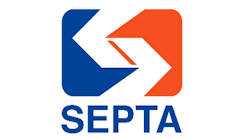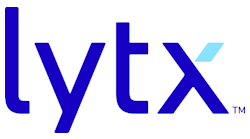Philadelphia, Penn.
Jim Fox
Assistant General Manager of System Safety
Southeastern Pennsylvania Transportation Authority
In order for a transit organization to be successful, safety has to be the top priority of all of its employees and its passengers. Through operational improvements, technological advancements and diverse internal and external outreach programs, the Southeastern Pennsylvania Transportation Authority (SEPTA) has created a “Safety First” culture for staff and customers.
Positive Train Control (PTC) has been at the forefront of transportation industry safety since 2008. On its Regional (commuter) Rail, SEPTA pushed ahead to meet PTC deadlines and, as of May 2017, all of SEPTA lines and equipment have been operating with PTC. Throughout the PTC implementation effort, SEPTA’s in-house team has worked continuously with Amtrak, freight partners, third-party contractors and the FRA. The final focus is completing the task of establishing interoperability with CSX and Norfolk Southern, which operate along portions of SEPTA territory. This phase of the program is scheduled to be completed by December.
SEPTA has 9,500 employees and, in addition to commuter rail, operates two subway/elevated lines, eight light rail trolley lines, one interurban high speed line and 119 bus routes. The Authority’s proactive approach to safety resulted in the 2012 launch of the “Never Too Busy for Safety” employee-focused program. In the spirit of Never Too Busy for Safety, SEPTA developed its Operational Safety Improvement Program (OSIP) in 2018. The OSIP defines how SEPTA will continue to enhance safety on all its operating modes. Key stakeholders from various departments, in conjunction with SEPTA’s General Manager and Deputy General Manager develop the initiatives in the plan and monitor progress on a monthly basis.
Technology has played a significant role in the continued development and success of SEPTA’s safety culture. Railroad simulators give engineers the ability to experience non-routine operating scenarios that may not otherwise be experienced in actual operating environments, such as slippery rail conditions. The program is beginning with Regional Rail and will be expanded to include all rail modes.
In the field, the Roadway Worker Protracker system is currently in use on the Norristown High Speed Line and is being piloted on Regional Rail. Each Railcar has an onboard sensor that communicates with an armband worn by a roadway worker to warn of an approaching train. SEPTA continues to install the Bus Alert Turn Warning, which provides an audible alert on the outside of the bus to warn those around the vehicle anyme it changes lanes or is making a turn. With over 600 installed, the balance of SEPTA’s 1,400 buses will be completed by 2019. SEPTA also recently started to install bus operator protective barriers, with all 1400 expected to be installed by 2020. Additionally, SEPTA is evaluating a couple of collision avoidance systems to mitigate collisions with privately owned vehicles, pedestrians and fixed objects.
The success of SEPTA’s safety culture relies on the buy in of its employees and customers. This year the System Safety Division developed Safety Culture surveys for employees to voluntarily complete. Approximately 5,000 responses were received. Once the results of the surveys were tabulated, System Safety officers visited all of SEPTA reporting locations on all shifts to discuss the results, listen to their concerns and remind them of the safety resources that are available to them.
In the community, SEPTA regularly interacts with its customers about safety. In addition to monthly safety blitzes and Operation Lifesaver presentations, since 2013 the Authority has held an annual System-wide “Make the Safe Choice” Safety Day in the spring. Over 400 employee ambassadors and safety officers visit stations across the service area, distributing safety materials and provide safety educational tips to passengers. Over the past two years, SEPTA has partnered with local school students who develop safety-related posters and messages to be distributed to riders.
One of the newest SEPTA safety tools is the “Safety Education Bus”, a passenger bus once slated for retirement was overhauled by employees at the Berridge Shop. The bus has been on the road since June, being used exclusively for the Authority’s internal and external safety awareness events.
Palm Beach, FL
Richard McKinney
Senior Manager of Safety, Training and Compliance
Palm Tran
Palm Tran Public Transportation in West Palm Beach, Florida is committed to putting the safety of its bus operators and passengers at the forefront through implementing strategies to advance safety and security. These strategies include: equipping buses with audio and video recording technology and providing ongoing de-escalation training for bus operators. These initiatives have resulted in measurable improvements in safety and security.
“The few incidents that have occurred on our system could have likely been avoided if drivers had followed their de-escalation training. We work with the bus operators to identify their ‘button-pushers’ and counsel them on how to deal with customers who may be a threat to the safety and comfort of the operator and the passengers,” Palm Tran Executive Director Clinton B. Forbes said. “One of the best pieces of advice I give the operators is that it is their absolute right to call for help and have someone removed from the system if they perceive any potential safety threat.”
Palm Tran enlisted Moore Counseling & Mediation Services, Inc. (MCSM) to provide regular de-escalation training to all Palm Tran bus operators. The program trains bus operators to diffuse tense situations through effective communication tactics which help avoid serious aggression.
“De-escalation works as a great set of tools, assisting operators with making a sound judgment when they are faced with a challenging passenger,” said MCSM President and CEO Martina Moore. “We have trained thousands of operators and other professionals and have received feedback that the de-escalation skills have been helpful in the workplace and in their personal life.”
“Many safety situations arise from fare disputes. We train the bus operators to quote the Company policy and not escalate the situation,” Senior Manager of Safety, Training and Compliance Richard McKinney said.
Bad actors can also be banned for 90 days from the bus system and all Palm Tran property under a trespass ordinance approved by the Palm Beach County Board of County Commissioners. It has been an effective tool to enhance safety and security working with law enforcement, according to McKinney.
Additionally, when Forbes joined the transit agency in 2015, he noted that while Palm Tran buses were equipped with video monitoring devices, the audio recording technology was turned off. Forbes led a safety initiative to turn on the audio on Palm Tran’s entire bus fleet of 159 buses. In addition, the buses now have audio announcements and decals that inform passengers assaulting a bus operator is a felony among other important notifications.
“Equipping the buses with video and audio recording equipment drastically improves the safety of our system,” Forbes explained. “This critical technology captures precise and unbiased evidence which aids law enforcement in the case of an incident. The audio and video recordings are also a strong deterrent, and that’s reinforced with onboard signage.”
Furthermore, Palm Tran bus operators receive customer service training and Americans with Disabilities Act (ADA) sensitivity training and must routinely pass a variety of safety assessments throughout their career.
The safety culture is ever-present at Palm Tran. For example, all meetings begin with a monthly safety message. The message, which is also displayed on monitors throughout all Palm Tran buildings, focuses on contemporary issues that are being reported by bus operators, maintenance technicians and other staff. This month’s message focuses on preventing slips, trips and falls. Last month, the message raised awareness about increased pedestrians as schools resumed session.
“Promoting a culture of safety is imperative,” McKinney said. “As Palm Beach County surges in population, Palm Tran will continue to drive the best-in-class safety practices and utilize onboard technology to ensure we remain a safe and efficient mode of transportation.”
San Diego, Calif.
Del Lisk
VP of Safety
Lytx
Passenger and operator safety is a top priority at Lytx, and has been for the past 20 years. Quite simply, our goal is to save lives. This theme of safety has been a connecting thread throughout my 36-year career in fleet safety, during which I have worked in driver training and safety/risk analysis. I’ve personally trained tens of thousands of drivers, while Lytx currently protects more than 850,000 across the globe.
For Lytx’s 3,000+ clients, including nine of the top 15 transit and railroad companies, having a strong safety culture is a requirement. And these clients have seen firsthand the other incredible benefits that come with safety, like reduced costs around collisions, insurance claims, fuel and maintenance, to name a few.
The most impactful way to achieve this level of safety is to prevent collisions before they happen with technology that can pinpoint the exact areas of risk within your fleet, provide you with evidence of that risk, show you how to address it and track improvements as you go. This is the power of managed video telematics solutions like those from Lytx, which are backed by more than 80 billion miles of analyzed driving data and supported by real people tagging each and every event triggered by a DriveCam event recorder.
With this massive vault of data, Lytx has been able to pinpoint the riskiest driving behaviors and understand exactly how risky they are. For example, we know that drivers cited for seatbelt violations are 3.4 times more likely to get into a collision than the average driver. We also know that a late response (late braking or an abrupt swerve) – the most frequently observed behavior among all of our transit clients – increases the likelihood of getting into a collision by 84 percent in addition to dramatically increasing the potential for a passenger fall claims.
The key for fleet managers is to pair this knowledge, and the video evidence from their program, with an internal safety program focused on coaching operators when they exhibit unsafe behaviors – and rewarding them when they’ve done everything right. We are constantly hearing from clients about the positive impact of rewards systems and a focus on improving skills, rather than taking a punitive approach.
And we’ve seen it work – the program is associated, on average, with a 50 percent reduction in collisions. MV Transportation, the largest privately owned passenger transportation contracting services firm in the U.S. and a Lytx client since 2005, implemented our flagship DriveCam safety program to identify the riskiest drivers in their fleet, then provided them with coaching and counseling to improve. As a result, the organization saw a 50 percent reduction in both incidence severity and frequency of risky driving incidents.
Safety is crucial for every fleet, and this is especially true when passengers are on board – lives being the most precious cargo. Leveraging technology to gain actionable insights and tailor coaching based on real-life events is a surefire way to better protect your operators and passengers.
Tempe, Ariz.
Tarek El Dokor
Founder & CEO
EDGE3 Technologies
A new and exciting driver monitoring solution has just been deployed in the transportation industry. It promises to be a game changer in terms of driver monitoring by automatically classifying driver violations at a level of detail that has never been attempted nor deployed before. Most existing systems are focused on tracking a driver’s face/eyes and flagging an alert when the driver is not looking at the road or feeling drowsy. While this is very important, it is not nearly the entire story. Specific behaviors need to be identified, addressed and drivers need to be coached on adhering to overall fleet policy. The problem is that most of these behaviors go unnoticed because, thankfully, most of them are not associated with an accident. They are also unaddressed because it is not feasible for a manual review to look at all non-accident violations associated with a given trip, because of the amount of data that is involved. This is where EDGE3’s CloudDETECT solution comes in.
With a side facing camera looking at the entire cabin, EDGE3 CloudDETECT is an AI platform that can automatically extract and pinpoint behaviors such as eating/drinking, smoking or texting while driving. This is a total game changer. Now, a manager can get small clips of someone eating, smoking, leaning forward with no seatbelt, etc. Previously inaccessible information without a tedious manual review process.
Fleet managers can also filter clips by violation, can look at the clips, and can invite the drivers to come in and undergo training. Just as important, fleet managers, using the CloudDETECT platform can trend out behavior over time, and monitor as number of infractions go up or down. An HR review page is available allowing site managers to write notes next to small video clips and share with their supervisor or the fleet owners.
EDGE3’s CloudDETECT platform can extract violations from the raw data and provide these small infraction clips to the fleet managers as part of a more comprehensive Driver Performance Management system. CloudDETECT provides fleet managers with the needed tools to holistically and proactively monitor the fleet’s performance.
For instance, CloudDETECT can look at a 20 hour video and reduce it to 10 minutes of dangerous driving and/or commercial fleet policy violations. These 10 minutes are also further broken down and classified into categories. A manager can take such a clip, sit down with the driver, and put a training plan in place, or utilize the overall trending fleet data to assess what fleetwide issues exist for their drivers. The process then informs everyone on how best to improve the behavior.
Fleet safety must be focused on the root cause, not just be reactive whenever a dangerous situation occurs. CloudDETECT is a solution that can not only detect a distraction, but that can also classify it, quantify it, and provide it to managers to significantly improve overall fleet safety.





